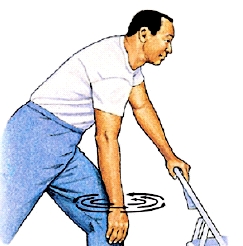Discharge Instructions for Shoulder Arthroscopy
Discharge Instructions for Shoulder Arthroscopy
You had a shoulder arthroscopy. It is a surgical procedure that helps your doctor diagnose and treat shoulder problems. These include instability, arthritis, and rotator cuff problems. Below are instructions to help you care for your shoulder when you are at home.
What to expect
After surgery, your joint may be swollen, painful, and stiff. The joint will heal with time. But, recovery times vary depending on what was done. For example, with a shaved rotator cuff, you may be told to move your arm soon after surgery to prevent stiffness. But if the rotator cuff is repaired or treatment is for instability or arthritis, your healthcare provider may want you to limit movement of your arm for a period of time. Follow your healthcare provider’s instructions regarding arm movement.
Activity

-
Don’t drive until your healthcare provider says it’s OK. And never drive while taking opioid pain medicine.
-
Ask your healthcare provider when it is safe to do pendulum exercises:
-
Hold on to the back of a chair, or lean on a tabletop with your healthy arm.
-
Don't actively move your arm with your shoulder muscles during this process. Instead, allow your arm to sway gently.
-
Use your torso to move your affected arm in a circle. First do 20 circles in one direction. Then do 20 circles in the other direction.
-
Repeat the pendulum exercise every 2 hours. When you feel ready, increase the number of circles to 50 in each direction, every 2 hours.
-
-
Bend your wrist and wiggle your fingers often to help blood flow.
Incision care
-
Check your incision daily for redness, tenderness, or drainage.
-
Wait 3 days after your surgery to begin showering. Then shower as needed. Carefully wash your incision with soap and water. Gently pat it dry. Don’t rub the incision, or apply creams or lotions to it.
-
Don’t soak in a bathtub, hot tub, or pool until your healthcare provider says it’s OK.
Other home care
-
Take your temperature daily for 7 days after your surgery. Report a fever above 100.4º F (38º C) to your healthcare provider. Fever may be a sign of infection.
-
Wear your sling or immobilizer as directed by your healthcare provider.
-
Use pain medicine, as needed and as directed. Don't wait until the pain is severe to start using the medicine.
-
Use an ice pack or a bag of frozen peas—or something similar—wrapped in a thin towel on your shoulder to reduce swelling for the first 48 hours after surgery. Leave the ice pack on for 20 minutes; then take it off for 20 minutes. Repeat as needed.
Follow-up
Make a follow-up appointment as directed by your healthcare provider.
Call 911 When to call your healthcare provider
Call 911 right away if you have any of the following:
-
Chest pain
-
Shortness of breath
Call your healthcare provider right away if you have any of the following:
-
Increasing shoulder pain or pain not relieved by medicine
-
Pain or swelling in the arm on the side of your surgery
-
Numbness, tingling, or blue-gray color of your arm or fingers on the side of your surgery
-
Drainage or oozing, excessive bleeding, redness, or warmth at the incision
-
Fever of 100.4º F (38º C) or higher, or as directed by your healthcare provider
-
Shaking chills
-
Nausea or vomiting
Updated:
March 15, 2019
Reviewed By:
Joseph, Thomas N., MD,Sather, Rita, RN